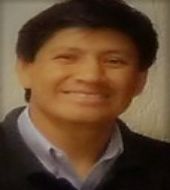Digital divide and new communication technologies, in the students of the State University of Bolívar
Main Article Content
Abstract
The objective of this research is based on explaining the influence of new information and communication technologies in reducing the digital divide in students at the State University of Bolívar. The methodology applied in this study is based on a documentary-type bibliographic design. This research arises from the need to ensure that university students reduce the problems related to the use of the Internet, hoping that they will achieve the required learning during this period. Finally, it is concluded that reducing the digital divide within education is not an easy challenge. It is not only at the educational level but this depends on various aspects that the State is in charge of being able to correct this gap, not only digital but also of access as a result of the existing inequalities, which becomes the main challenge for the internet to arrive in optimal conditions. conditions to all students, guaranteeing their free access and the possibility of being able to obtain an adequate education in each of the students. This improvement will allow education to be included in the teaching-learning and integration factors, forming a whole, without leaving any student behind, achieving that there are more competent professionals capable of facing any situation by having adequate digital skills.
Downloads
Article Details

This work is licensed under a Creative Commons Attribution-NonCommercial-ShareAlike 4.0 International License.
1. Derechos de autor
Las obras que se publican en 593 Digital Publisher CEIT están sujetas a los siguientes términos:
1.1. 593 Digital Publisher CEIT, conserva los derechos patrimoniales (copyright) de las obras publicadas, favorece y permite la reutilización de las mismas bajo la licencia Licencia Creative Commons 4.0 de Reconocimiento-NoComercial-CompartirIgual 4.0, por lo cual se pueden copiar, usar, difundir, transmitir y exponer públicamente, siempre que:
1.1.a. Se cite la autoría y fuente original de su publicación (revista, editorial, URL).
1.1.b. No se usen para fines comerciales u onerosos.
1.1.c. Se mencione la existencia y especificaciones de esta licencia de uso.
References
Camus, J. (2009). Tienes 5 segundos. Chile: Universidad Diego Portales. Obtenido de http://tienes5segundos.cl/pdfs/libro-tienes5segundos-final.pdf
Cañón, R., Grande, M., & Cantón, I. (2016). Brecha Digital: impacto en el desarrollo social y personal, factores asociados. Tendencias Pedagógicas, 28. doi: doi:10.15366/tp2016.28.009
Cortez, N., Galdámez, A., Molina, C., Serrano, G., & Villanueva, H. (2020). El nuevo rostro en perspectiva de la brecha digital en la educación superior para la región latinoamericana en la coyuntura del Covid-19. Universidad Fracisco Gavidia. Obtenido de https://hdl.handle.net/11592/9637
Cruz Roja Española. (2021). Qué es la bracha digital y cómo evitar que provoque desigualdad. Recuperado el 25 de Mayo de 2022, de https://www2.cruzroja.es/web/ahora/brecha-digital#texto2
Hernandez, C., Prada, R., & Mariño, L. (2021). Educación mediada por las TIC en la educación superior en medio del periodo de aislamiento de la pandemia COVID-19. Revista Boletín REDIPE, 10(10), 22-32. Obtenido de https://revista.redipe.org/index.php/1/article/view/1491/1407
Imaginario, A. (2022). Significado de Educación a distancia. Recuperado el 24 de Mayo de 2022, de https://www.significados.com/educacion-a-distancia/
Instituto Nacional de Estadísticas y Censos, INEC. (2021). Tecnologías de la información y comunicación, 2020. Informe de encuesta multipropósito, INEC. Obtenido de https://www.ecuadorencifras.gob.ec/documentos/web-inec/Estadisticas_Sociales/TIC/2020/202012_Principales_resultados_Multiproposito_TIC.pdf
Lloyd, M. (2020). Desigualdades educativas y la brecha digital en tiempos de COVID-19. Educación y Pandemia, 115-121. Obtenido de http://132.248.192.241:8080/jspui/bitstream/IISUE_UNAM/546/1/LloydM_2020_Desigualdades_educativas.pdf
Martínez, C. (2022). Integración e inclusión: dos caminos diferenciados en el entorno educativo. Recuperado el 25 de Mayo de 2022, de https://educrea.cl/integracion-e-inclusion-dos-caminos-diferenciados-en-el-entorno-educativo/
Mendoza, L. (19 de junio de 2020). La educación en México en tiempos de COVID-19. Recuperado el 243 de Mayo de 2022, de https://www.educacionfutura.org/la-educacion-en-mexico-en-tiempos-de-covid-19/
Montenegro, S., Raya, E., & Navaridas, F. (2020). Percepciones docentes sobre los efectos de la Brecha Digital en la educación básica durante el Covid-19. Revista Internacional de Educación para la Justicia Social, 9((3e)), 317-333. doi:https://doi.org/10.15366/riejs2020.9.3.017
Organización de las Naciones Unidad para la Educación, la Ciencia y la Cultura, UNESCO. (2007). Informe de Seguimiento de la EPT en el Mundo. Recuperado el 25 de Mayo de 2022, de Bases Sólidas. Atención y educación de la primera infancia: https://es.unesco.org/gem-report/node/505
Organización de las Naciones Unidas para la Educación, la Ciencia y la Cultura, UNESCO; Instituto Internacional para la Educación Superior en América Latina y el Caribe, IESALC. (13 de Mayo de 2020). Covid-19 y eduación superior: De los efetos inmediatos al día después. Recuperado el 24 de Mayo de 2022, de Análisis de impactos, respuestas políticas y recomendaciones: https://www.iesalc.unesco.org/wp-content/uploads/2020/05/COVID-19-ES-130520.pdf
Orozco-García, M., Vásquez-Rizo, F., & Gabalán-Coello, J. (2021). Incorporación, uso y apropiación social de las TIC para una educación de calidad. Cultura, Educación y SOciedad, 12(1), 19-62. doi: https://doi.org/10.17981/cultedusoc.12.1.2021.04
Palella, S., & Martins, F. (2010). Metodología de la investigación ciantitativa. Caracas: FEDUPEL, Fondo Editorial de la Universidad Pedagógica Experimental Libertador.
Pita, R., Cevallos, S., & Maldonado, K. (2021). Brecha Digital y su impacto en la educación a distancia. UNESUM- Ciencias: Revista Científica Multidisplinaria, 5(3), 161-168. Obtenido de https://revistas.unesum.edu.ec/index.php/unesumciencias/article/view/429/341
Sunkel, G. (2006). El consumo cultural en América Latina. Bogota: Convenio Andrés Bello. Obtenido de https://books.google.co.cr/books?id=js9eKdJbyREC&hl=es&source=gbs_book_other_versions
Thomas, G., & Loxley, A. (2007). Deconstrucción de la educación especial y construcción de la inclusiva. Madrid: La Muralla.
Tillman, M. (19 de Abril de 2022). ¿Qué es el Zoom y cómo funciona? además de consejos y trucos. Recuperado el 23 de Mayo de 2022, de https://www.pocket-lint.com/es-es/aplicaciones/noticias/151426-que-es-el-zoom-y-como-funciona-ademas-de-consejos-y-trucos
UNESCO. (2007). Informe de seguimiento de la EPT en el mundo. Bases sólidas:. Paris. Obtenido de https://es.unesco.org/gem-report/node/505
Universidad Estatal de Bolívar. (2021). Manual de Usuario de la Plataforma EVEA. Unidad de Desarrollo de Software. Obtenido de https://rdigital.ueb.edu.ec/bitstream/123456789/2273/1/Manual%20del%20EVEA%202021.pdf
Universidad Estatal de Bolívar. (Marzo de 2022). Modelo tecnológico para carreras híbridas y en línea de la Universidad Estatal de Bolívar V1.0. Guaranda: Dirección de Tecnologías de la Información y Comunicación. Recuperado el 25 de Mayo de 2022, de https://rdigital.ueb.edu.ec/bitstream/123456789/4800/1/MODELO%20DE%20INFRAESTRUCTURA%20TECNOL%C3%93GICA%20PARA%20CARRERAS%20H%C3%8DBRIDAS%20UEB.pdf
Urresti, M. (2008). Ciberculturas juveniles: los jóvenes, sus prácticas y sus representaciones en la era de internet. Buenos Aires: La Crujia Ediciones.





